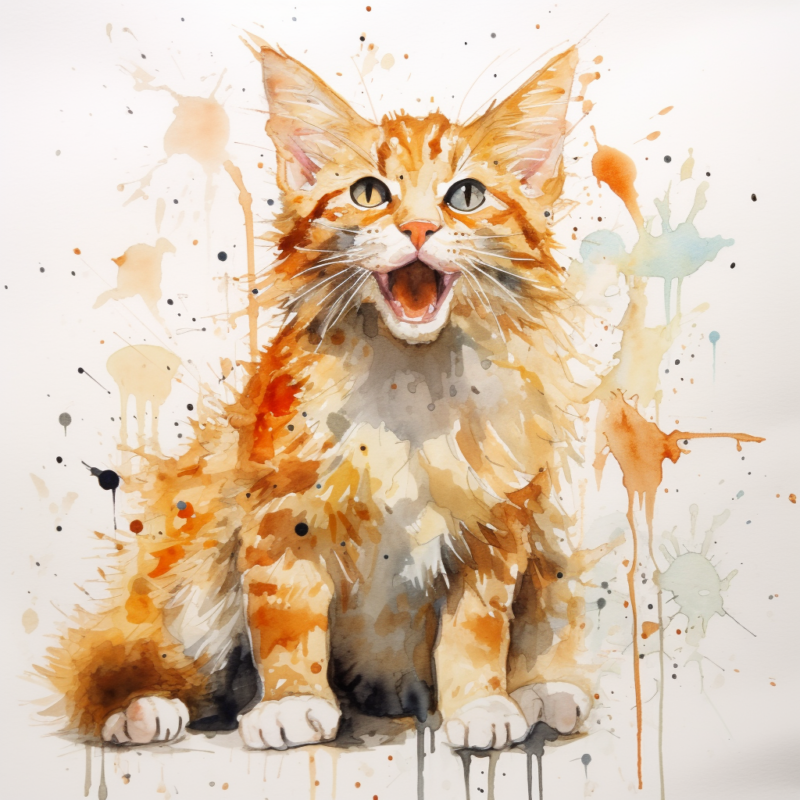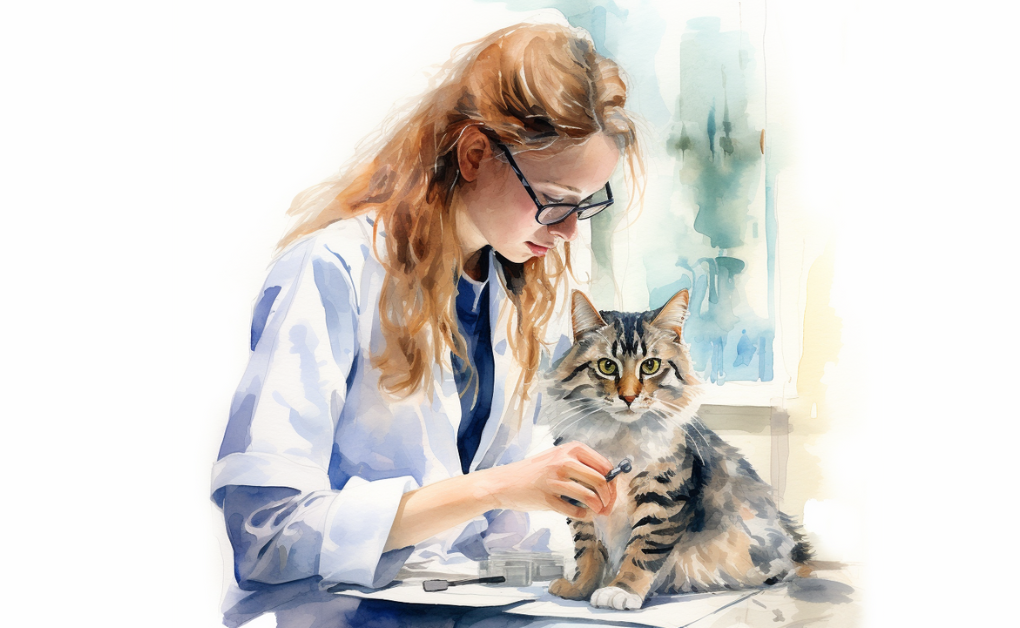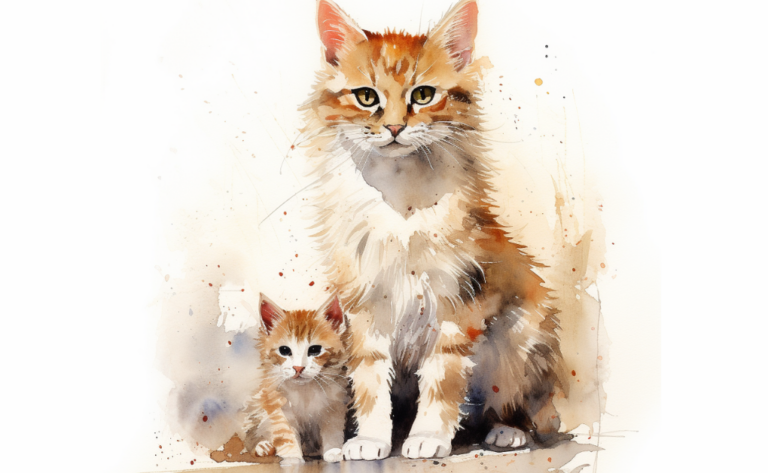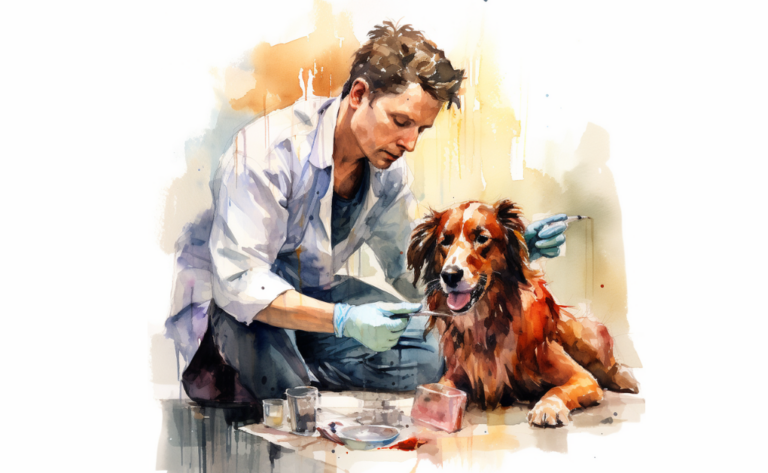What are Eye Infections in Cats?
What is it?
How is it Treated?
Breed Predispositions
Persian cats, Himalayan cats, and other brachycephalic breeds
Introduction
One sunny afternoon, Sarah noticed her usually spirited Siamese cat, Whiskers, had become unusually reserved and had watery eyes with a greenish discharge. Worried about Whiskers’ well-being, she scheduled a visit to their trusted veterinarian for an evaluation. The veterinarian examined Whiskers and diagnosed him with an eye infection—a common but potentially serious issue that can affect cats of all breeds and ages.
Infections in a cat’s eye, specifically affecting the structures such as the conjunctiva (the thin protective layer lining the inside of the eyelids and the whites of the eyes) or the cornea (the transparent front surface of the eye), are referred to as eye infections in cats. Various pathogens, including bacteria, viruses, or fungi, can result in these infections. Conditions such as cat conjunctivitis or feline herpesvirus infection can lead to such issues.
Eye infections can trigger symptoms like redness, discharge, and discomfort in the feline’s eyes, often hinting at eye inflammation. Conjunctivitis, a common problem, can cause similar symptoms and is especially common in flat-faced cats. Certain eye infections like feline herpesvirus can result in corneal ulcers requiring prompt veterinary attention.
In some cases, an eye infection can be a secondary symptom of an upper respiratory infection. It’s crucial to seek timely veterinary intervention to accurately diagnose and manage these infections to avoid potential complications and maintain the cat’s ocular health. It’s also worth noting that some eye infections can be contagious to other cats, requiring careful handling and isolation to prevent the spread of the infection.
Types of Eye Infection in Cats
The different types of eye infections in cats can include:
Conjunctivitis
Conjunctivitis refers to inflammation of the conjunctiva, which is the thin membrane that covers the inner surface of the eyelids and the white part of the eye. Common causes include viral or bacterial infections, allergies, irritants, or underlying health conditions. Symptoms may include redness, discharge, swelling, squinting, and increased tear production.
Keratitis
Keratitis is the cornea’s inflammation, the eye’s clear outer layer. Infections, trauma, irritant exposure, or underlying health conditions can cause it. Symptoms may include redness, cloudiness or opacity of the cornea, eye pain, discharge, and increased sensitivity to light.
Uveitis
Uveitis refers to uvea inflammation, including the iris, ciliary body, and choroid. It can be caused by infections, autoimmune disorders, trauma, or underlying systemic diseases. Symptoms may include redness, eye pain, squinting, sensitivity to light, blurred vision, and changes in the color of the iris.
Corneal ulcers
Corneal ulcers are open sores or wounds on the cornea, often caused by trauma, infections, or underlying eye conditions. Symptoms may include eye redness, squinting, discharge, eye pain, increased tear production, and cloudiness or opacity of the cornea.
Blepharitis
Blepharitis is the inflammation of the eyelids, commonly caused by bacterial infections, allergies, or underlying health conditions. Symptoms may include redness, swelling, crusting or discharge on the eyelids, itching, and discomfort.
Chlamydial conjunctivitis
Chlamydial conjunctivitis is a bacterial infection caused by Chlamydophila felis. It primarily affects the conjunctiva and can cause severe conjunctivitis if left untreated. Symptoms may include severe conjunctivitis with discharge, redness, swelling, and discomfort.
Feline Infectious Peritonitis (FIP)-Related Ocular Conditions
FIP is a viral disease caused by the feline coronavirus. It can affect various organs, including the eyes, leading to anterior uveitis, retinitis, or corneal sequestration. Symptoms may vary depending on the specific ocular condition present.
Feline Immunodeficiency Virus (FIV)-Related Eye Infections:
FIV is a viral infection that weakens the cat’s immune system, making them more susceptible to various infections, including those affecting the eyes. Eye infections associated with FIV can range from conjunctivitis to more severe conditions such as uveitis or retinitis.
Please note that a veterinarian should perform proper diagnosis and treatment. If you suspect your cat has an eye infection, seeking veterinary care for an accurate diagnosis and appropriate treatment is important.
Causes of Cat Eye Infections
Several factors can trigger eye problems, including eye infections in cats. These include:
Bacterial Infections
Bacterial infections can occur when bacteria infiltrate the eyes, often through scratches or injuries. Common culprits include Staphylococcus, Streptococcus, and Pseudomonas. Symptoms of these infections can include redness, discharge, swelling, and discomfort in the eyelids and eyes.

Viral Infections
Viral infections, such as Feline Herpesvirus-1 (FHV-1) and Feline Calicivirus (FCV), are typical causes of eye infections in cats. These viruses are commonly associated with both respiratory and ocular symptoms. FHV-1 can instigate conjunctivitis, corneal ulcers, and uveitis, whereas FCV can prompt conjunctivitis and corneal ulceration. Symptoms often involve redness, discharge, squinting, and cloudy eyes.
Fungal Infections
While relatively rare, fungal eye infections can occur, particularly in cats with weakened immune systems or in specific geographic areas.
Fungi such as Aspergillus or Candida can cause infections, resulting in symptoms like redness, discharge, and corneal ulcers. These cases necessitate specific antifungal treatments.
Parasitic Infections
Parasites like mites or fleas can infect cats’ eyes, inducing irritation, inflammation, and potential secondary infections. For instance, the parasite Thelazia californiensis can infest the conjunctiva, leading to symptoms like eye discharge and conjunctivitis. Prompt treatment to eradicate the parasites is required.
Allergies
Allergies can also lead to eye infections in cats. Environmental allergens like pollen, dust mites, certain chemicals or even food allergies can incite an allergic response impacting the eyes, leading to symptoms like redness, itching, watery discharge, and swollen eyelids.
Trauma or Injury
Injuries to the eye, such as scratches, foreign bodies, or blunt trauma, can introduce bacteria or irritants, triggering eye infections. Such injuries can compromise the protective barrier of the eye, making it more susceptible to infections.
Blocked Tear Ducts
Blocked tear ducts resulting from congenital abnormalities or acquired conditions can prevent proper tear drainage. This can cause excessive tearing, eye irritation, and an increased risk of infections.
Secondary Infections
Eye infections can also be secondary to underlying conditions like respiratory infections, systemic diseases, or immune-mediated disorders. These infections may result from bacteria, viruses, or fungi that spread to the eyes from other body areas.
Cataracts or Dry Eye
Conditions such as cataracts or dry eye can exacerbate the likelihood of a cat suffering from an eye infection, especially if the cat is stressed.
A thorough examination by a veterinarian is crucial for determining the specific cause of an eye infection in a cat. Identifying the underlying cause is critical for the suitable treatment and management of the infection. Veterinary intervention is essential to accurately diagnose the root cause and prescribe the correct treatment to alleviate symptoms and promote healing.
Symptoms of Eye Infections in Cats
Bacterial styes are common culprits for eye infections in cats, and the symptoms can vary based on the location of the infection. Common symptoms of eye infections in cats can include:
- Eye Inflammation: The cat’s eye may display redness or inflammation.
- Excessive Tearing or Discharge: You may observe an excessively watery eye or unusual discharge from the eye.
- Cloudy Cornea: The cornea of the cat’s eye may appear cloudy or opaque.
- Eye Swelling: Puffiness or swelling around the eye can be a symptom.
- Frequent Squinting or Closing Eye: Cats might squint or keep the affected eye closed.
- Frequent Blinking or Rubbing: Cats may blink or rub their eyes frequently.
- Photophobia: Cats may show symptoms of light sensitivity, a condition known as photophobia.
- Appearance Changes: Changes in the color or shape of the eye can be a symptom of an eye infection.
- Presence of Crusts: Crusts or discharge around the eye may be noticeable.
- Behavior Changes: Cats may show decreased activity or appetite symptoms, indicating they might not feel well.
- Signs of Discomfort: Eye infections can be painful, and cats may display signs of discomfort or pain, including pawing at the eye or vocalizing.
It’s crucial to note that these symptoms may vary based on the specific type of infection and its severity. Cat colds, for instance, can exhibit different signs. If you notice any of these symptoms or suspect decreased activity or appetite symptoms, your cat may be experiencing an eye infection. In that case, it’s recommended to seek a veterinarian’s advice for an accurate diagnosis and appropriate treatment.
Diagnosis of Eye Infections in Cats
Veterinarians utilize a variety of techniques to diagnose eye infections in cats accurately. These methods help pinpoint the underlying cause and guide the right treatment approach. Here’s an overview of commonly used diagnostic techniques for cat eye problems:
- Physical Examination: Initially, the veterinarian will thoroughly examine the cat’s eyes. They will scrutinize the eye’s appearance, check for signs like discharge or inflammation, and evaluate other symptoms indicative of an eye infection.
- Fluorescein Staining: This process involves using special dyes such as fluorescein to reveal abnormalities or ulcers in the cornea. The dye is introduced to the eye, causing damaged areas to glow bright green when exposed to blue light, thus detecting potential corneal ulceration.
- Microscopic Evaluation: The vet might procure a sample of discharge from the infected eye for microscopic examination. This examination helps detect any bacteria, fungi, or parasites present in the discharge, contributing to deciding the most effective treatment.
- Culture and Sensitivity Test: In certain instances, the vet might collect a sample for culture and sensitivity testing. This test involves culturing the sample in a lab setting to identify the microorganism causing the infection and determine the most potent antibiotics against it.
- Allergy Testing: The vet may suggest allergy testing if an allergic reaction is suspected of causing the eye problem. This can help identify the specific allergens causing the reaction and guide the treatment strategy.
The diagnostic approach can vary, considering the individual case and the suspected cause of the eye infection. For instance, the vet may look for signs of a foreign body in the eye or evaluate discharge or infected skin cells on the front of the eye.

It’s crucial to consult with a veterinarian for an accurate diagnosis and an appropriate treatment plan for any serious eye conditions in your cat.
Treatment for Feline Eye Infections
The specific treatment strategy for eye infections in your feline friend depends on the nature and underlying cause of the infection. Here are some frequently adopted treatments for this eye condition in cats:
Topical Medications
Topical treatments such as eye drops or ointments are often the first defense against eye infections. These contain antibiotics, antiviral, or antifungal agents administered directly to the eye per the vet’s instructions. They work by neutralizing or halting the proliferation of infectious organisms, reducing inflammation, and encouraging healing.
Systemic Medications
In some cases, oral medications like oral or antiviral drugs are given to address systemic infections affecting the eyes. These drugs tackle the root cause of the infection and facilitate comprehensive healing.
Warm Compresses
Warm compresses to the affected eye can help alleviate discomfort, diminish inflammation, and aid discharge drainage. It’s crucial to use a clean, warm (not hot) compress and gently apply it to the eye for a few minutes.
Eye Irrigation
Your vet may perform eye irrigation to clear out any debris or discharge from the eye. This procedure helps eliminate irritants and contaminants, creating a cleaner, healing environment. A sterile saline solution or a specially designed cat eyewash is used for irrigation.
Supportive Care
Alongside targeted treatments, the vet may prescribe measures to manage symptoms and promote healing. These may encompass artificial tears or lubricating eye drops to mitigate dryness and enhance comfort.
E-collar (Elizabethan Collar)
An E-collar can be useful in preventing the cat from scratching or rubbing the affected eye. It safeguards the eye, averting further irritation or injury while healing occurs.
Addressing Underlying Conditions
Suppose the eye infection results from an underlying issue such as allergies or a weakened immune system. In that case, the vet may seek to manage these underlying conditions to avoid recurring infections. For example, if the cat is showing symptoms of cat flu, the appropriate treatment is essential to ensure a full recovery.
It’s crucial to strictly adhere to the vet’s instructions concerning the administration, dosage, and frequency of the eye medication or eye ointment. Besides, keeping an eye on the cat’s recovery progress during treatment and maintaining follow-up appointments with the vet for any necessary rechecks or modifications in the treatment plan is vital.
If no noticeable improvement or symptoms exacerbate despite treatment, immediate veterinary attention is needed. Some eye infections may necessitate more intensive or specialized treatment approaches. Early and apt treatment significantly boosts the chances of effectively resolving the infection and helps prevent potential complications. Remember, the vet may prescribe treatments as needed, so your cat may receive specific advice based on their case.
Prevention of Eye Infections in Cats
Pet owners can take several measures to help prevent eye infections in cats and maintain their overall eye health. Here are some preventive measures:
- Regular Eye Examinations: Schedule routine check-ups with a veterinarian to have your cat’s eyes examined. This allows for early detection and management of any eye conditions or infections.
- Keep the Eye Area Clean: Gently clean the area around your cat’s eyes using a clean, damp cloth or specially formulated eye wipes for cats. This helps remove any debris or discharge that can contribute to infections.
- Prevent Trauma to the Eyes: Take precautions to prevent eye injuries in your cat. Keep hazardous objects out of reach, such as sharp toys or plants with thorns, and ensure your cat’s environment is safe and free from potential hazards.
- Proper Hygiene: Practice good hygiene when handling your cat’s eyes. Wash your hands thoroughly before and after administering any eye medications or treatments.
- Avoid Irritants: Keep irritants away from your cat’s eyes. Avoid using harsh chemicals or cleaning agents that may come into contact with their eyes. Additionally, prevent exposure to smoke, strong fumes, or other environmental irritants.
- Vaccinations: Ensure your cat is current on vaccinations, as some infectious diseases can cause eye infections. Consult with your veterinarian to determine the appropriate vaccination schedule for your cat.
- Regular Grooming: Proper grooming helps maintain the cleanliness of your cat’s face and fur, reducing the risk of eye infections. Regularly trim long hair around the eyes to prevent it from irritating or obstructing them.
- Diet and Nutrition: Provide a balanced and nutritious diet to support your cat’s overall health, including their eye health. Consult your veterinarian to determine the best diet for your cat’s needs.
- Avoid Overcrowded Environments: Minimize exposure to overcrowded environments, such as boarding facilities or shelters, where the risk of contagious eye infections may increase.
- Prompt Veterinary Care: If you notice any signs of eye irritation or infection in your cat, seek veterinary attention promptly. Early diagnosis and treatment can help prevent the progression of an eye infection and reduce the risk of complications.
Remember, maintaining good overall health and hygiene practices for your cat promotes their overall well-being, including their eye health. Regular veterinary care and careful monitoring can help keep your cat’s eyes healthy and reduce the risk of eye infections.
Frequently Asked Questions
Disclaimer: The information provided on this veterinary website is intended for general educational purposes only and should not be considered as a substitute for professional veterinary advice, diagnosis, or treatment. Always consult a licensed veterinarian for any concerns or questions regarding the health and well-being of your pet. This website does not claim to cover every possible situation or provide exhaustive knowledge on the subjects presented. The owners and contributors of this website are not responsible for any harm or loss that may result from the use or misuse of the information provided herein.







